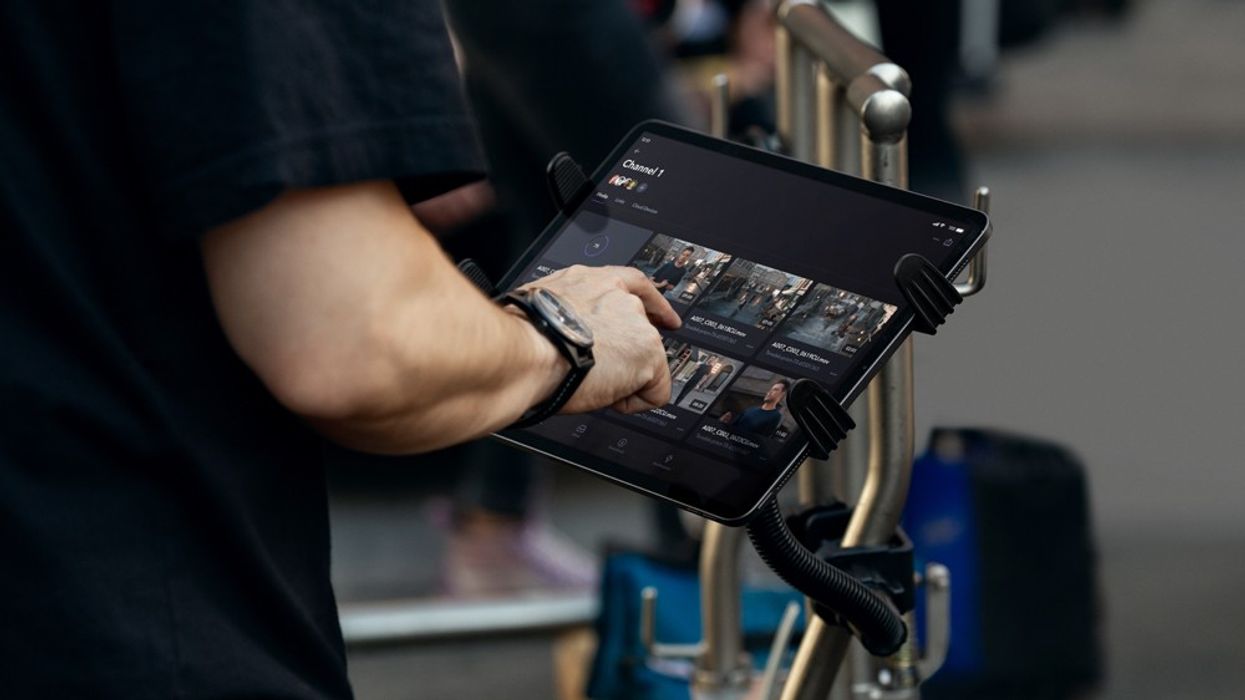Frame.io’s New Camera to the Cloud Aims to Speed Up Post Workflows
Frame.io C2C (Camera to Cloud) is the next evolution in media delivery.

“Hurry up and wait."
In our business, this is the reality of creating content. Whether it is waiting to get the light right for a shot, or setting up cameras, or even just getting your dailies ready to review before you strike a set, there is plenty of time wasted just waiting to take the next step in your project.
Even with the digital revolution, it still takes time to get digital files from the camera to your editor to piece together a rough cut of the day’s shots. But thanks to C2C from Frame.io, that wait time is practically eliminated, and anyone around the world can view dailies almost instantly.
“Over the last 100 years, there’s only been a few changes in production as it has evolved,” said Frame.io CEO Emery Wells. “But like going from film to digital, going directly to the cloud is the next evolution in this transition. It solves the 'first-mile' problem.”
Wells calls the new Camera to Cloud the “Holy Grail of Video Production,” and the idea couldn’t be simpler in its concept. From the moment the director says cut, camera shots automatically upload to the cloud, making them nearly instantly available to editors and other post-production team members. Before this solution, users would have to wait for ingestion of video for post and then move up to Frame.io, a process that could take hours, or even days. But that's no longer the case.
How does Camera to Cloud manage massive RAW 8K video files that are gigabytes in size? Camera to Cloud generates lower resolution H.264 proxies at 3-4 Mbps with timecode. Once uploaded, these proxy files are viewed and commented upon in real-time by anyone who has access to the Frame.io network.
The advantage here is that department heads can get a head start on just about any changes that the creative process generates in the middle of a shoot. Moreover, post-production supervisors and editors using NLEs no longer have to wait for transporting of hard drives with the original footage or ingestion time to get started putting together a cut of dailies. Frame.io is also working with ColorFront, which can offer basic color correction to create real-time mastering. All in the Cloud.

Camera to Cloud can also be connected to as many cameras as needed, networking to a single hotspot, and all footage uploaded as the broadband connection allows. All encrypted and secure. What makes it really interesting is that Camera to Cloud happens automatically. If the modem path is disconnected, C2C will save the data to an SD card or HDD. Consequently, when the path is reconnected, the data is automatically uploaded via 4G/LTE. The connection is also available through a mobile device when a hotspot is unavailable.
SDI-based cameras supporting the Frame C2C system include all current ARRI models, RED’s DSMC2 line, RED Komodo, and Panavision. Partially supported camera systems include Sony VENICE, Canons EOS Cinema Cameras, and the Panasonic VistaAlta series. As for audio support, Camera to Cloud is built into Sound Devices’ Series 8 audio recorder. This gives productions a solid rental option for taking advantage of Camera to Cloud, no matter their budget.
On the software side, Camera to Cloud supports Blackmagic Resolve, Adobe Premiere Pro, Apple Final Cut Pro, and Avid Media Composer. If you have made reviewed comments via Frame in the past, you will be able to take advantage of Camera to Cloud moving forward.

Comments can be made in real-time and uploaded back into the Frame system for the production team to review. The benefit here is that changes can be made on the fly, while the camera and crew are still set up for the day, limiting the time taken for complicated and expensive reshoots.
Camera assistants can also set an expiration date for the Camera to Cloud upload portal so that once a rented Teradek system is returned to the rental house, the files no files can be pushed up to the account. This eliminates any potential cross-contamination from another unrelated project. The portal is also one way so that the system cannot access the network and pull back any data.
Frame.io is also working on a real-time streaming option, which will livestream the production from the camera like a worldwide video assist network. The intent of the livestreaming component is to allow people who are not on set to have a video feed all around the world. Once incorporated, anyone on the production, clients, or studios will be able to see the production capture footage live as it happens.
Frame.io’s Camera to Cloud was recently deployed by one of the first productions to emerge from the industry’s shut down. Songbird, produced by Michael Bay, has been testing the system and how seamlessly it works with their safety protocols, making crews smaller and productions are more nimble.
Camera to Cloud will also be democratizing, as well, as Frame.io plans to make Camera to Cloud available at no extra cost to all levels, from individual to studio. All the production requires is supporting hardware and a Frame.io account.
For more information visit the Frame.io website.











